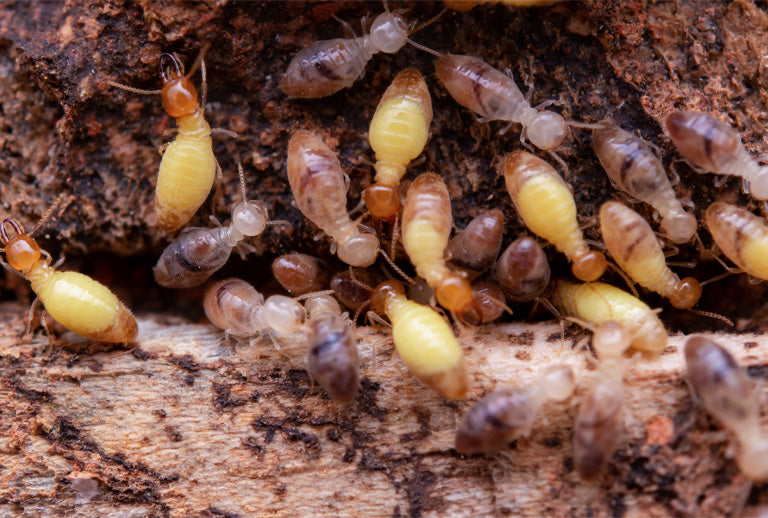Pest population occurs round the year but population maximum during June – Sep coinciding with the onset of monsoon.
Symptoms of Damage
Termites are likely to cause damage to transplanted seedlings particularly in the earlier stage. (Wilting of seedlings). Base of trunks plastered with runways made of soil and fibers.

1. Soil on trunk
2. Damaged bark
Identification of the Pest
Adults: Cream coloured, tiny insects resembling ants with dark coloured head.
Management
Cultural Method
Identify and eliminate termite mounds found in or near coconut nurseries or gardens.
Practice field sanitation by removing organic matter from nursery soil and covering germinating nuts with a layer of river sand.
Chemical Method:
Spray Copper Sulphate 1% or Cashew Nut Shell oil 80% or spray Chlorpyriphos @ 3ml/lit of water, Neem Oil 5% or NSKE 20% to preserve plaited coconut leaves from the termite attack.
Apply calcium at the base of the trunk for control of termite attack. Swabbing with neem oil 5% once on the base and upto 2 m height of the trunk for effective control.
Lacewing Bug: Stephanitis typicus
Symptoms of Damage
White spots can be observed on the upper surface of the leaves.The lace bug feeds on coconut foliage by sucking sap. It also plays a role in transmitting Phytoplasma from root-wilt affected palms to healthy palms.

White spots on leaves
Identification of the Pest
Nymph: White with dark patches.
Adults: White coloured adults with netted venation on wing.
Management
Cultural Method
Remove leaflets harboring these insects and destroy them.
Chemical Method
Spray any one of the following; Malathion 50 EC @ 2 ml/lt, Dimethoate 30 EC @1 ml/lt, Methyl demeton 25 EC @1 ml/lt, Phosphamidon 40 SL @1.25 ml/lt, Methomyl 25 EC @2 ml/lit, 3% Neem oil
